
Rediscovering Japan

Rediscovering Japan
Travel (Kariya/Asuke (Aichi))

by tomizuta
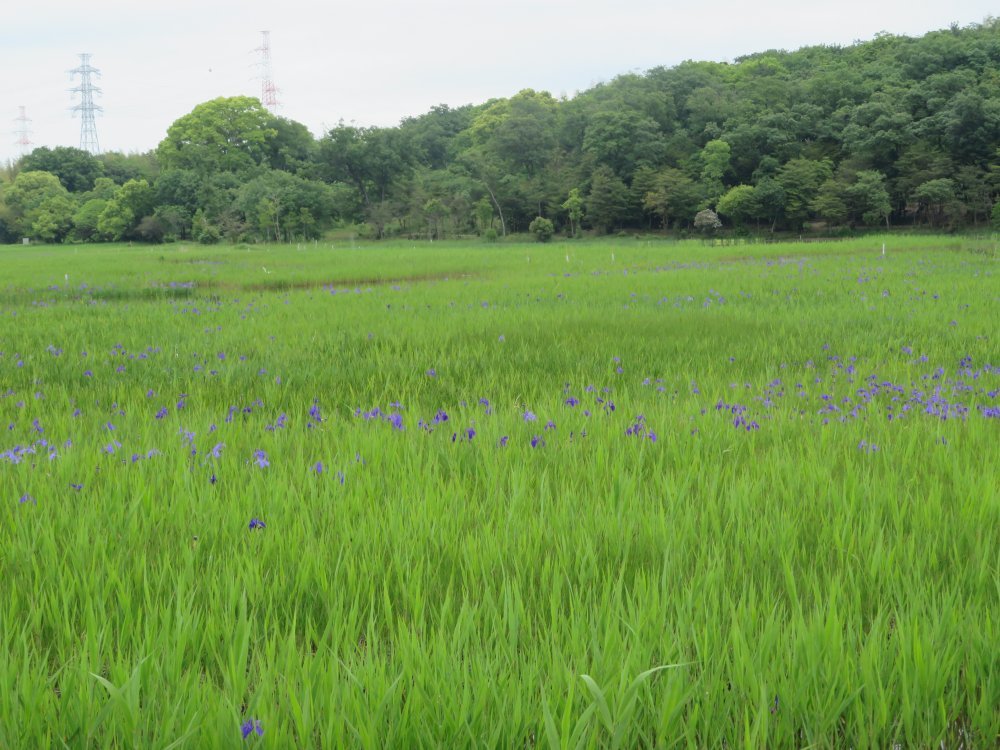
In Mid May 2022, the Kakitsubata at Kozutuminishiike in Kariya City (Aichi
Prefecture) was at 30% bloom. It is one of the three areas designated as
a national natural monument under the Law for the Protection of Cultural
Properties, alongside Otanosawa in Kyoto and Karakawa in Tottori.
There is a sayinggWhich is more beautiful, Ayame or Kakitsubata?h, obviously because the two look so much alike. Kakitsubata (or Japanese Iris) is well known through writings from the Heian Period as well as Korin Ogatafs masterpiece and national treasure, gKakitsubata Zubyoubuh. I missed the flowering season of kakitsubata when I visited Suigo Sawara Ayame Park (Chiba Prefecture) in June 2020. I had learned that one of the few natural Kakitsubata growing areas was in Kariya City in Aichi Prefecture. Having learned that the Kakitsubata there had started to bloom in early May, I set out to visit the place in mid May 2022.
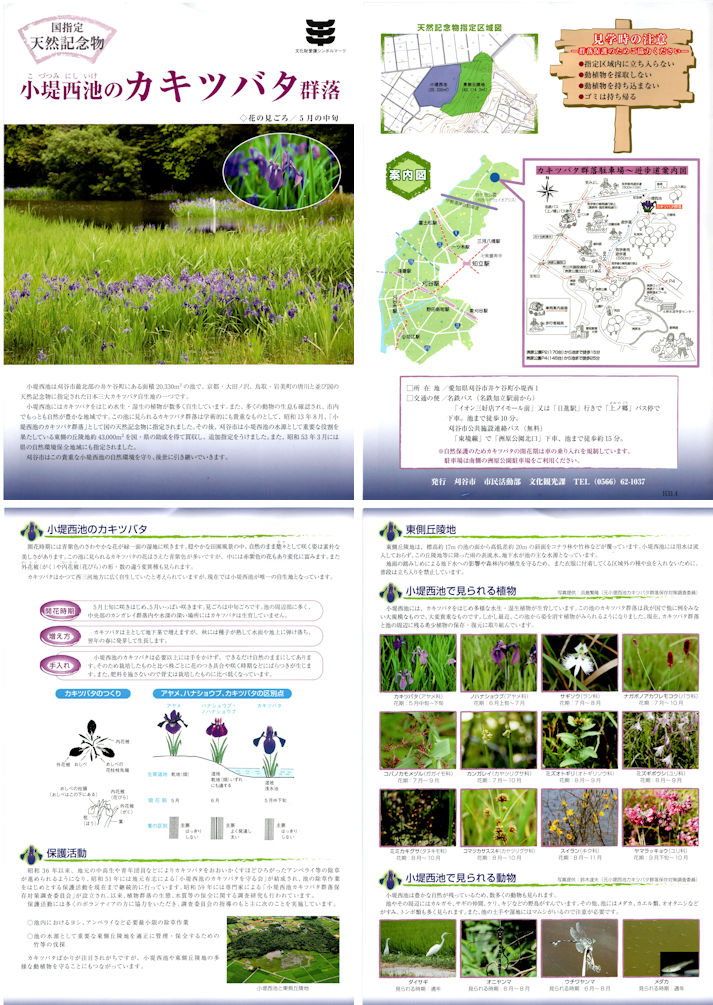
The pamphlet of the wild Kakitsubata of Kozutuminishiike we received at the sight contains valuable information on how to distinguish Kakitsubata from other irises and preservation efforts of the marsh.
As it took almost eight hours to drive from the Tokyo area, we stayed at
a hotel in Anjo City neighboring Kariya City, where we left early the following
morning. It had started to drizzle which slowed down driving through the
morning congestion. We got close to the place but unable to drive there.
Surprisingly there were very few road signs showing the direction to the
place. We drove back south to find an attendant by the road, who advised
us that we has to head further south to a car park from where it was a
15 minutesf walk to the Kakitsubata growing area. We finally got to the
car park in the municipal Suhara Park. There were attendants giving directions
to the visitors. We followed their direction which led us through a forest.
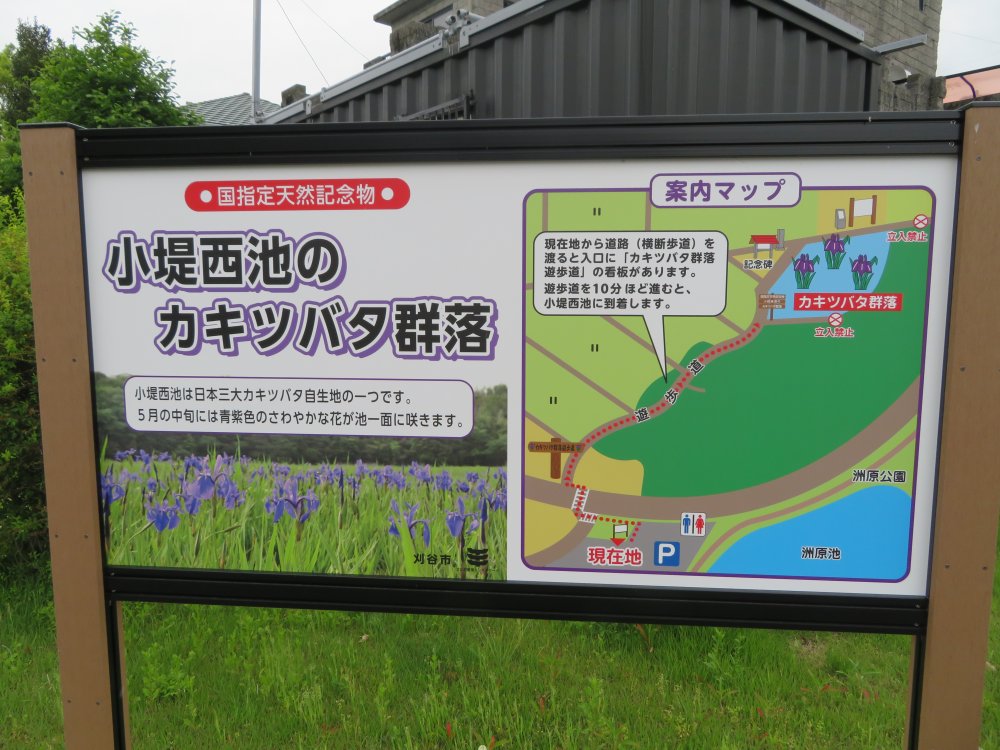
The signboard at the car park of Suhara Park gave directions to the Kakisubata growing area.
After a 15 minutesf walk through the forest, we came out to a vast open area, where scattered purple flowers could be seen.
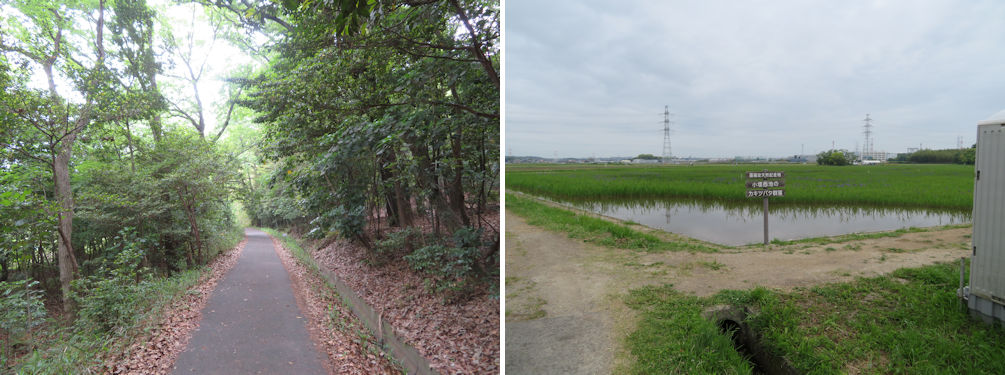
We walked about 15 minutes through a forest (left), to come out to a vast marsh area (right)
Another attendant at the entrance to the Kakisubata area approached us to provide a brochure of the Kozutumi Nishi Ike Kakitsubata wild growing area. gThe Kakitsubata is at 30-40% bloom. Youfll find more at the north side of the marsh. Itfs a pity we used to have more, but the population has dwindled because of the reeds. I hope the rain will let up. Wefre expecting a group of elementary school pupils today.hhe said. It was not until I did a bit of homework that I learned Kakitsubata has been designated as an endangered species in many prefectures. It was a week day and still early so there were not that many visitors. You are not allowed to enter the marsh area and have to view the flowers from the path surrounding the marsh. But it was enough for me to identify the white stripe on the inside of the petal that is the distinct characteristic of Kakitsubata.
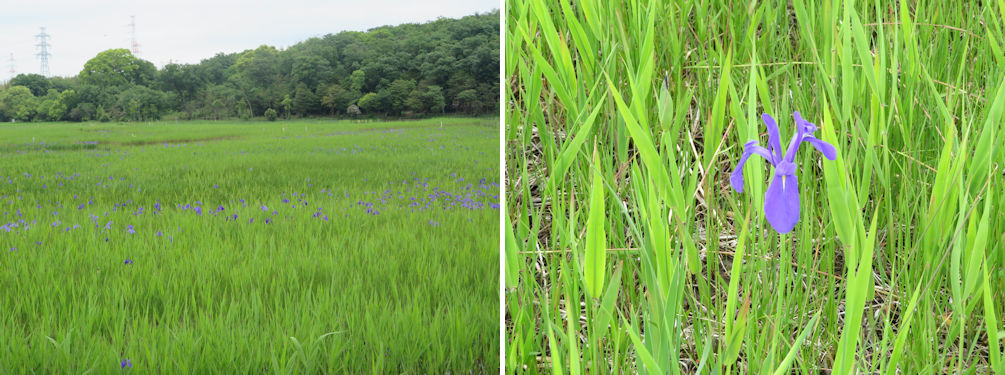
The Kakitsubata was at 30-40% bloom (left). A closer shot of the Kakitsubata
with its unmistakabke white stripe on the petal (right).
Following the attendantfs advice we went around to the north side of the marsh. There were more visitors here including a group of people that appeared to be a TV crew. There was also a tent staffed by a group of attendants. As the attendant had advised, we found more flowers scattered along the marshland. By this time, many visitor groups were arriving. I went to the very east side of the marsh where I found a group of pretty Kakitsubata.
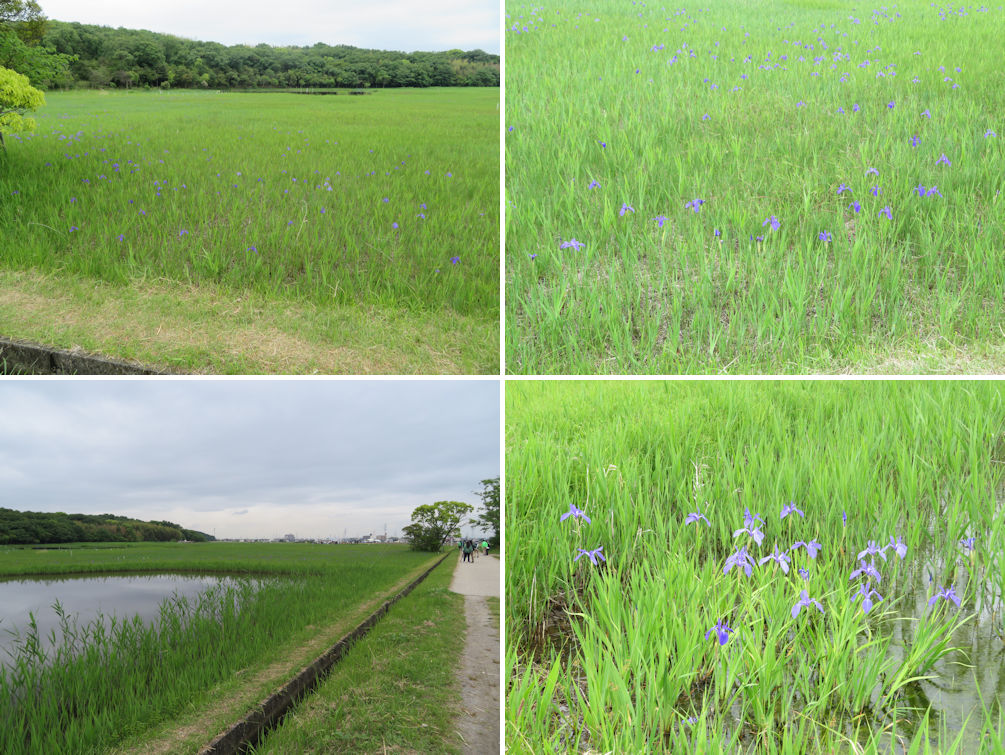
View of the marsh from the north side (upper left), and a closer view of the Kakitsubata (upper right). By this time the number of visitors was increasing. The elementary school pupils and some other groups had now arrived (lower left). I went to the very east side of the marsh where I found a group of pretty Kakitsubata (lower right).
On our way back, we saw some yellow flowers, which the attendant had told us were ayame (iris). Having done some homework, I am led to believe they were not ayame but kishoubu (yellow iris) which is not a domestic species, although I have no means of proving this unless I revisit to confirm this.
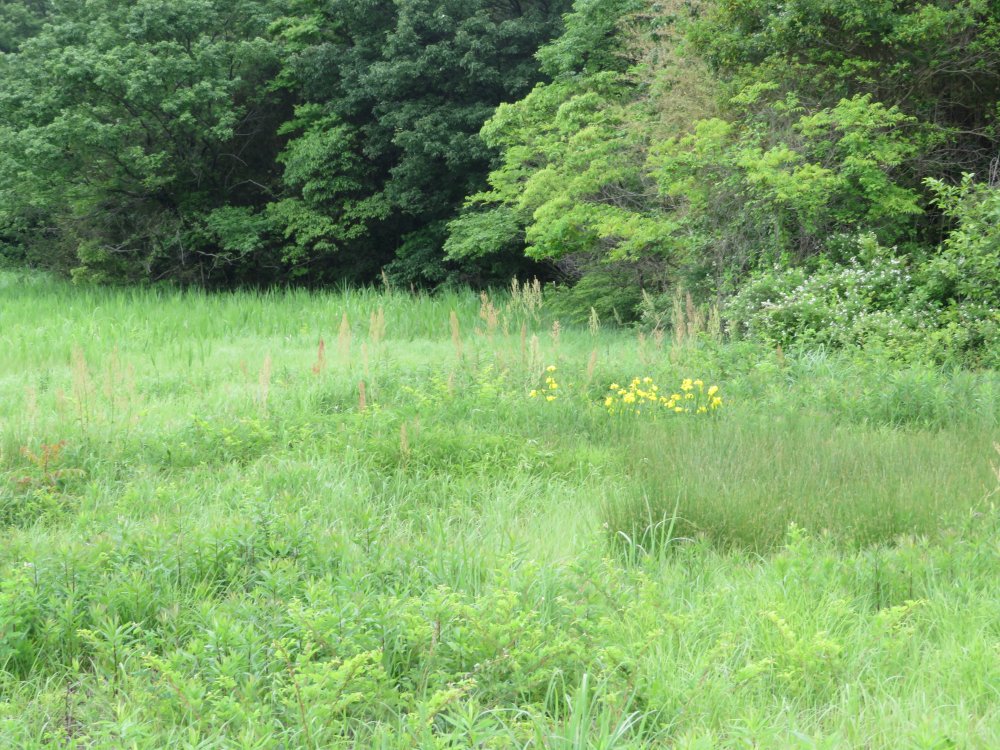
I am led to believe they were not ayame but kishoubu (yellow iris) which is not a domestic species.
From there we headed north to Nagano Prefecture. We took the shortest route
which was not a motorway. Just before the border between Aichi Prefecture
and Nagano Prefecture, I noticed a roadsign of an Important Preservation
District for Groups of Historic Buildings. This was Asuke Town in Toyota
City.
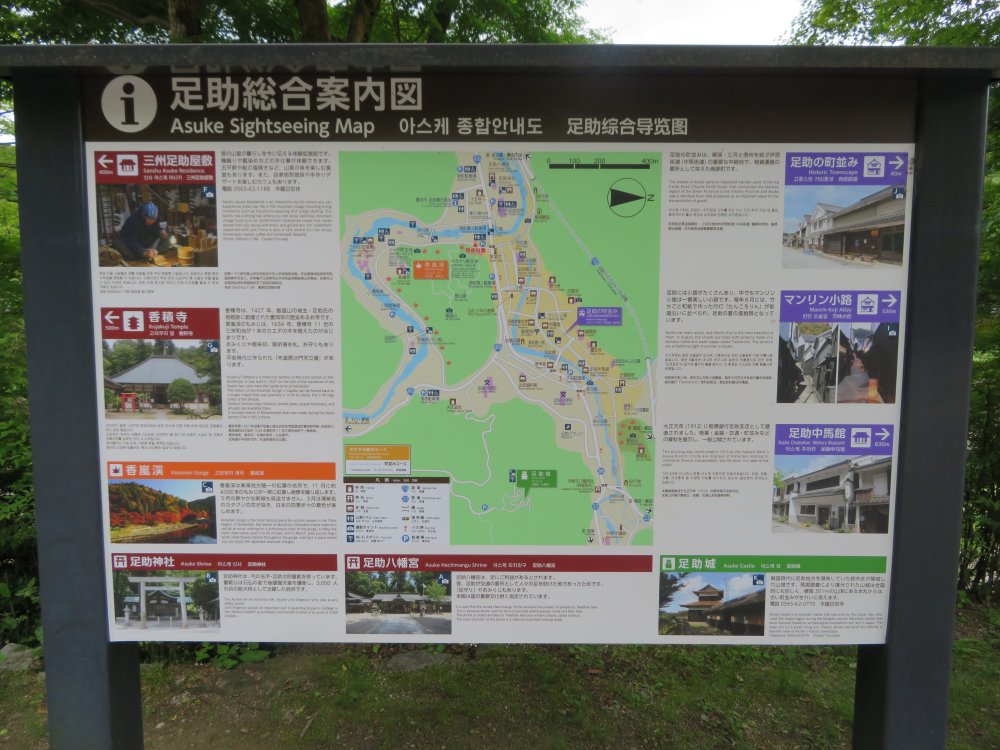
The sightseeing map we found in the car park.
We parked in the south car park, and took a moment to stroll the historic area. It was a Thursday and many shops were closed. There are many areas designated as Important Preservation District for Groups of Historic Buildings. I personally felt more could be done to make the historic area more appealing, but this could be because it was a quiet period. The best season seems to be Autumn when the mountain turns color.
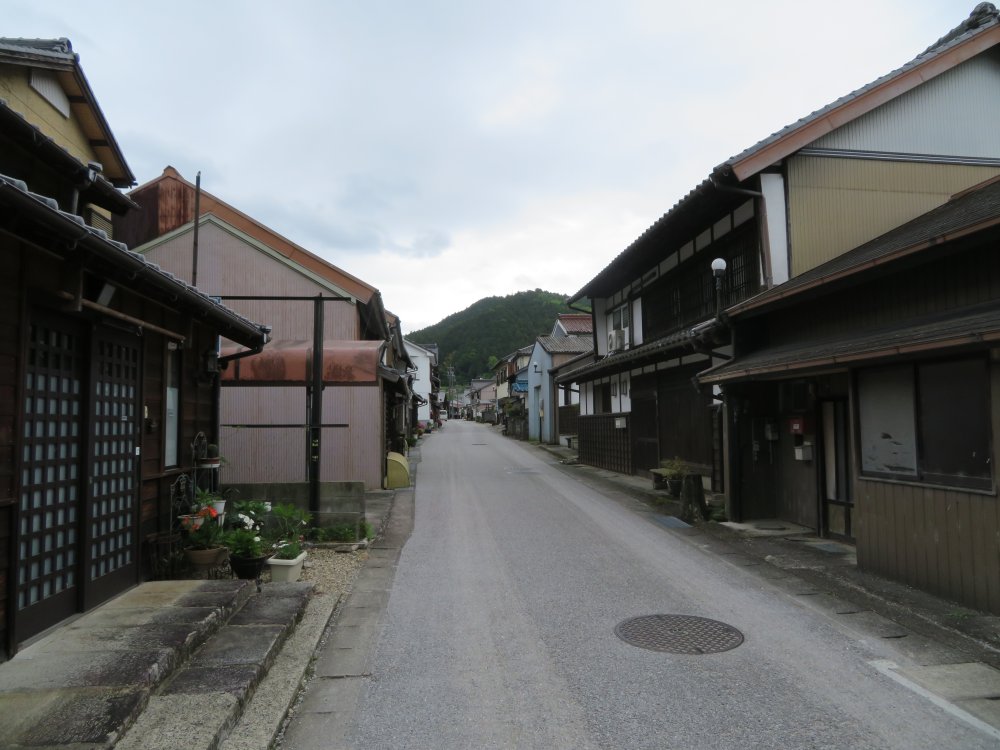
View of the main preservation district of Asuke. A typical lodging village view. I personally felt more could be done to make the historic area more appealing.
I did gain some valuable information. I learned that Asuke was an important lodging area to the north as part of the Salt Road that delivered salt from the Aichi seaside to the mountain areas. Interestingly enough, this was reconfirmed when I visited the Lodging Village History Museum in Shimosuwa, Nagano Prefecture a couple of days later.
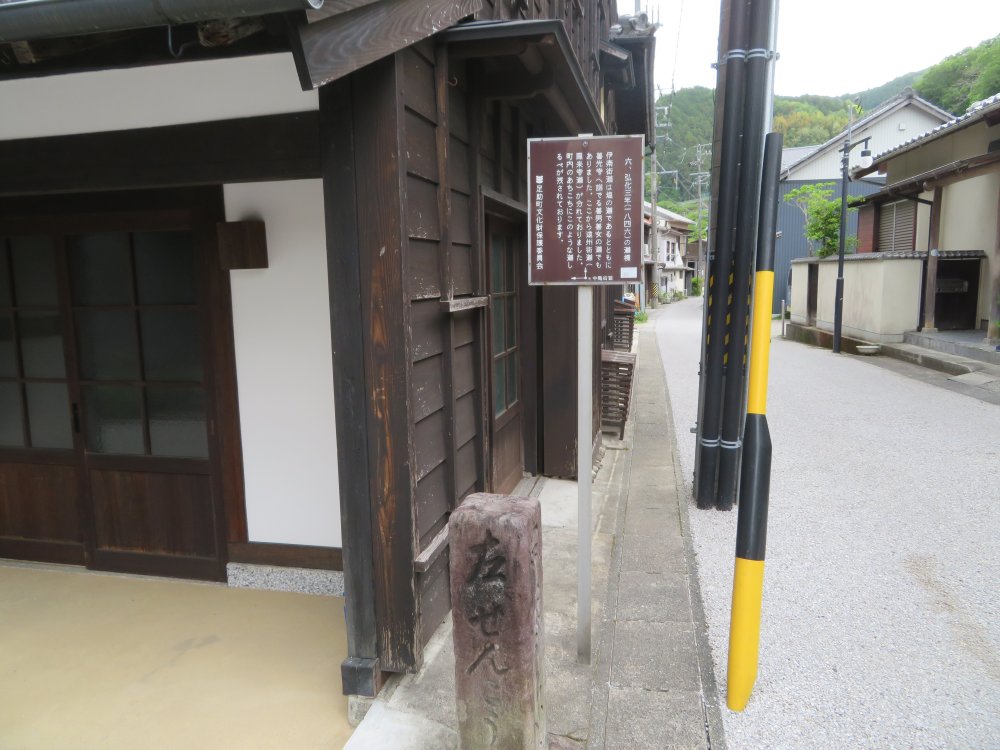
The signpost erected in 1846, which testifies that Asuke was an important
lodging area to the north as part of the Salt Road that delivered salt
from the Aichi seaside to the mountain areas.